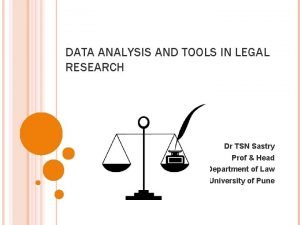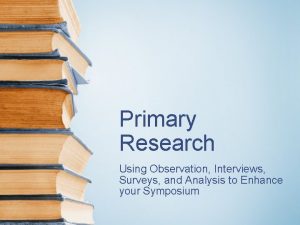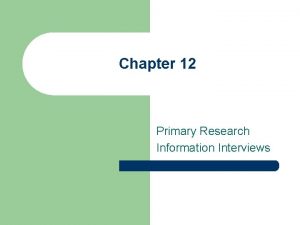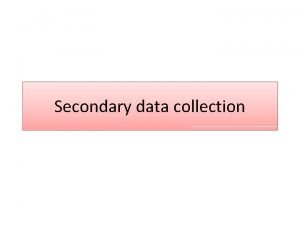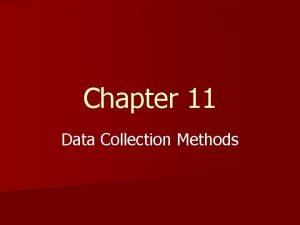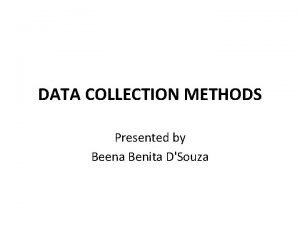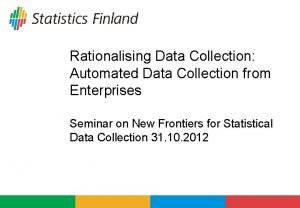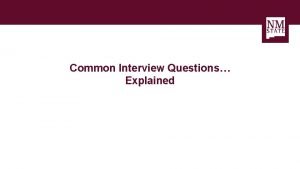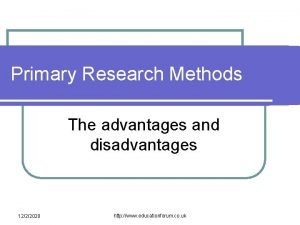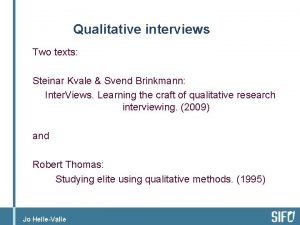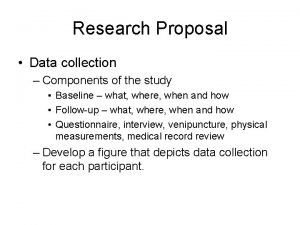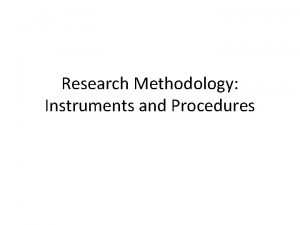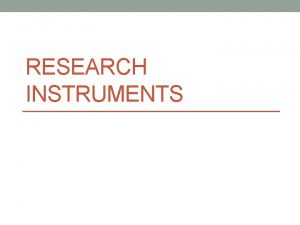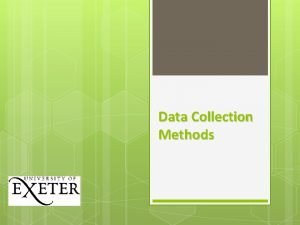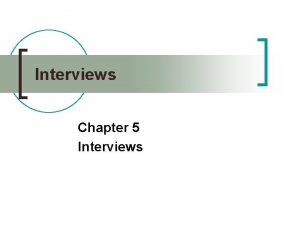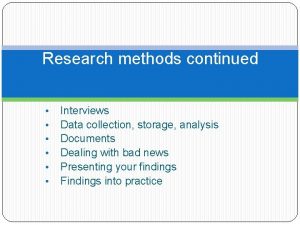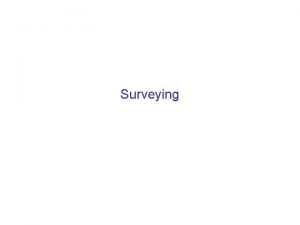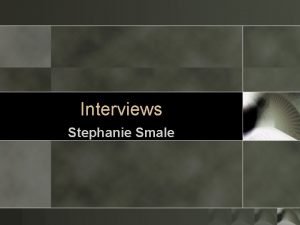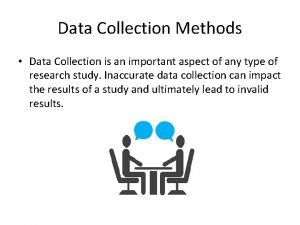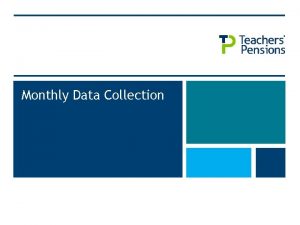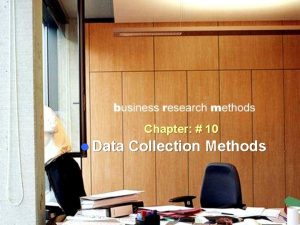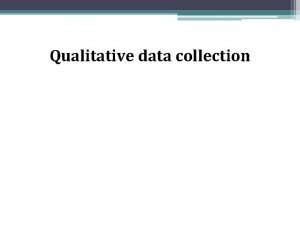Data Collection Methods Introduction and Interviews Research Methods


















- Slides: 18

Data Collection Methods: Introduction and Interviews Research Methods for Business © 2012 John Wiley & Sons Ltd. www. wiley. com/college/sekaran 1

LAB CLASS • Venue: NAC 512 Date: (29/10, 12/11, 19/11, 26/11) and Time(2: 00 PM-5: 00 PM) Research Methods for Business © 2012 John Wiley & Sons Ltd. www. wiley. com/college/sekaran 2

Sources of Data • Primary data: information obtained first hand by the researcher on the variables of interest for the specific purpose of the study. • Examples: individuals, focus groups, panels • Secondary data: information gathered from sources already existing. • Examples: company records or archives, government publications, industry analyses offered by the media, web sites, the Internet, and so on. Research Methods for Business © 2012 John Wiley & Sons Ltd. www. wiley. com/college/sekaran

Primary Sources of Data • Focus Groups – Consist typically of eight to ten members with a moderator leading the discussions for about two hours on a particular topic, or product in their expertise. In sum Focus groups are used for: • Exploratory studies. • Making generalizations based on the information generated by them. • Conducting sample surveys. Research Methods for Business © 2012 John Wiley & Sons Ltd. www. wiley. com/college/sekaran 4

Primary Sources of Data Videoconferencing Panels- Need to meet more than once The delphi Technique: Uses a cautiously selected panel of experts in a systematic, interactive manner. These experts answer questionnaires in two or more rounds. Research Methods for Business © 2012 John Wiley & Sons Ltd. www. wiley. com/college/sekaran 5

Primary Sources of Data Unobtrusive Measures: It does not involve people. The number of different brands of soft drink cans found in trash bags also provides a measure of their consumption levels. Research Methods for Business © 2012 John Wiley & Sons Ltd. www. wiley. com/college/sekaran 6

Interviews • Unstructured interviews: – the interviewer does not enter the interview setting with a planned sequence of questions to be asked of the respondent. • Structured interviews: – Conducted when it is known at the outset what information is needed. – The interviewer has a list of predetermined questions to be asked of the respondents either personally, through the telephone, or via the computer. Research Methods for Business © 2012 John Wiley & Sons Ltd. www. wiley. com/college/sekaran

Personal interview • Advantages – – Can clarify doubts about questionnaire Can pick up non-verbal cues Relatively high response/cooperation Special visual aids and scoring devises can be used • Disadvantages – – – High costs and time intensive Geographical limitations Response bias / Confidentiality difficult to be assured Some respondents are unwilling to talk to strangers Trained interviewers Research Methods for Business © 2012 John Wiley & Sons Ltd. www. wiley. com/college/sekaran

Telephone interview • Advantages – Discomfort of face to face is avoided – Faster / Number of calls per day could be high – Lower cost • Disadvantages – Interview length must be limited – Low response rate – No facial expressions Research Methods for Business © 2012 John Wiley & Sons Ltd. www. wiley. com/college/sekaran

Self-administered • Advantages – – Lowest cost option Expanded geographical coverage Requires minimal staff Perceived as more anonymous • Disadvantages – – Low response rate in some modes No interviewer intervention possible for clarification Cannot be too long or complex Incomplete surveys Research Methods for Business © 2012 John Wiley & Sons Ltd. www. wiley. com/college/sekaran

Questionnaires • It must have closely defined alternative. • Personally administered questionnaires: Is confined with the survey to a local area, and the organization is willing and able to assemble groups of employees to respond to questionnaires at the workplace. • Mail Questionnaires. Research Methods for Business © 2012 John Wiley & Sons Ltd. www. wiley. com/college/sekaran 11

Questionnaires Principles of wording: • The appropriateness of the content of the questions. • How questions are worded and the level of sophistication of the language used. • The type and form of questions asked. • The sequencing of the questions • The personal data sought from the respondents Research Methods for Business © 2012 John Wiley & Sons Ltd. www. wiley. com/college/sekaran 12

Type of Questions • Open-ended Versus closed questions • The first one allow the respondents to answer them in any way they choose. Example: State five things that are interesting and challenging in the job • Closed Ended: Asks respondents to make choices among a set of alternatives given by the researchers. Research Methods for Business © 2012 John Wiley & Sons Ltd. www. wiley. com/college/sekaran 13

• It is advisable to ask some negatively worded questions as well. • Avoid Double-Barreled questions- “Do you think there is good market for the product and that it will sell well? • Avoid ambiguous questions- “To what extent would you say you are happy” Research Methods for Business © 2012 John Wiley & Sons Ltd. www. wiley. com/college/sekaran 14

• Some questions might require respondents to recall experiences from the past that are hazy in their memory. Answers to such questions might have bias. • Questions should not be phrased in such a way that they lead the respondents to give the responses that the researcher would like them to give. Research Methods for Business © 2012 John Wiley & Sons Ltd. www. wiley. com/college/sekaran 15

Projective Methods • Projective techniques help the respondent to offer answers to questions which might otherwise be rather difficult or cumbersome to respond to. • Projective methods which include such techniques as word association, sentence completion, thematic apperception, and inkblot tests, usually tap the deep-seated motivations of the respondent and provide relevant answers to difficult questions. Research Methods for Business © 2012 John Wiley & Sons Ltd. www. wiley. com/college/sekaran

Projective Methods • However, the responses have to be analyzed by individuals well trained in interpreting the answers, if they are to be meaningfully utilized for research purposes. • Marketing research can benefit substantially by using projective techniques, as for example, in developing products, designing ads, and selecting appropriate media. Research Methods for Business © 2012 John Wiley & Sons Ltd. www. wiley. com/college/sekaran

Projective Methods • Word association techniques: – Asking the respondent to quickly associate a word with the first thing that comes to mind. – Often used to get at true attitudes and feelings. • Thematic apperception tests (TAT): – Call for respondent to weave a story around a picture that is shown. – To trace patterns and personality characteristics of respondents. • Inkblot tests: – Form of motivational research, uses colored inkblots that are interpreted by respondents. Research Methods for Business © 2012 John Wiley & Sons Ltd. www. wiley. com/college/sekaran
 Legal research tools and techniques
Legal research tools and techniques Primary research interviews
Primary research interviews Primary research interviews
Primary research interviews Data collection procedure example
Data collection procedure example Types of data collection methods
Types of data collection methods Observational data collection method
Observational data collection method Data collection methods observation
Data collection methods observation Automated data collection methods
Automated data collection methods Research procedure in methodology
Research procedure in methodology Face to face interview pros and cons
Face to face interview pros and cons How to answer what are your greatest strengths
How to answer what are your greatest strengths Group interviews advantages and disadvantages
Group interviews advantages and disadvantages Type scale
Type scale Kvale och brinkmann
Kvale och brinkmann How to collect data in quantitative research
How to collect data in quantitative research Data collection research proposal
Data collection research proposal Instruments in research methodology
Instruments in research methodology Research instrument examples
Research instrument examples Instrument for research data collection
Instrument for research data collection
